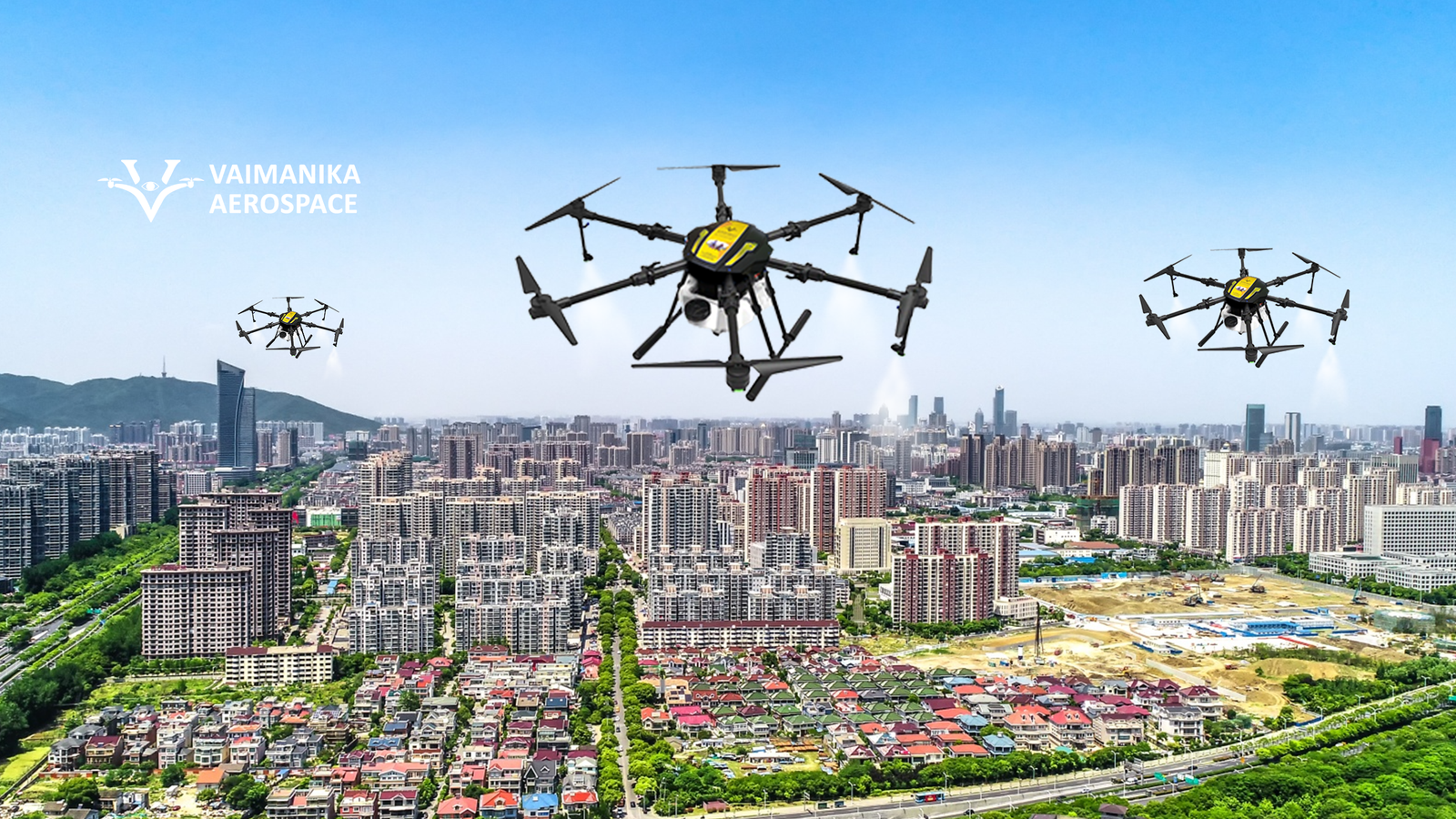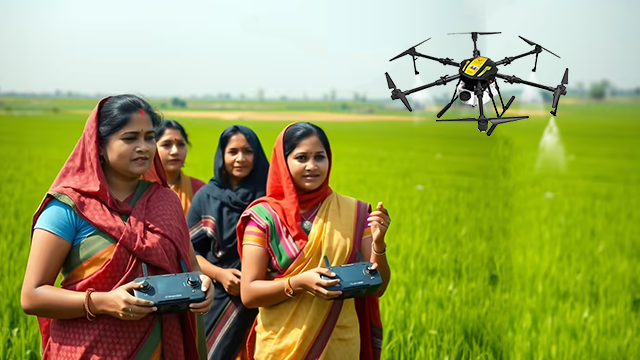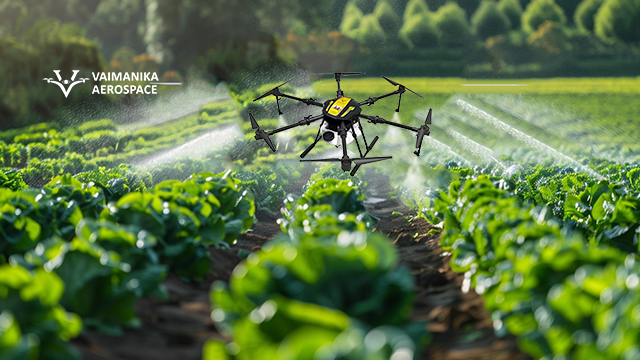India’s drone industry is soaring, with a market valued at ₹654 million in 2024 and projected to reach ₹1,430 million by 2029, growing at a 17% annual rate. From precision agriculture to last-mile delivery, drones are reshaping industries. However, purchasing high-end drones and maintaining them can be costly and complex, especially for small businesses and startups. Enter Drone-as-a-Service (DaaS)—a model where companies lease drones and related services instead of owning them. Is DaaS the future of India’s drone ecosystem? Let’s explore its potential, benefits, challenges, and what lies ahead.
What is Drone-as-a-Service (DaaS)?
DaaS is a subscription-based model where businesses access drones, pilots, software, and data analytics on-demand, without the burden of ownership. Think of it like renting a car: you pay for usage, maintenance is handled by the provider, and you get tailored solutions for your needs. In India, companies like Garuda Aerospace, Skylark Drones, and TSAW Drones offer DaaS for applications such as:
-
Agriculture: Crop monitoring, pesticide spraying, and yield analysis.
-
Construction & Mining: Site mapping, progress tracking, and stockpile measurement.
-
Logistics: Last-mile delivery for e-commerce and healthcare.
-
Surveillance: Infrastructure inspection and disaster management.
The Drone Shakti initiative, announced in the 2022 Union Budget, promotes DaaS, particularly for agriculture via Kisan Drones, aiming to digitize farming and boost rural economies.
Why DaaS is Gaining Traction in India
1. Cost Efficiency
-
Owning a drone like the DJI Matrice 350 RTK (₹10–15 lakh) or DJI Agras T40 (₹6–8 lakh) involves high upfront costs, plus expenses for batteries, software, and maintenance. DaaS eliminates these, with leasing fees starting as low as ₹10,000/month for basic services.
-
Small farmers in states like Punjab or Maharashtra can access drone spraying services through DaaS providers like BharatRohan, paying per acre instead of investing in equipment.
2. Access to Expertise
-
DaaS providers supply trained pilots with Remote Pilot Certificates (RPC), ensuring compliance with Drone Rules 2021. This is critical in India, where operating drones over 250 grams requires DGCA certification.
-
Companies like DroneAcharya offer end-to-end solutions, including data processing with software like Pix4D, saving clients from hiring specialized staff.
3. Scalability and Flexibility
-
Businesses can scale drone usage based on project needs. For example, a construction firm mapping a highway for NHAI can lease drones for a specific phase and return them post-project.
-
DaaS supports diverse industries, from TSAW Drones delivering medical supplies in Himachal Pradesh to Throttle Aerospace providing surveillance for mining in Jharkhand.
4. Innovation Without Ownership
-
Leasing allows access to cutting-edge tech, like AI-powered drones or hybrid VTOL models, without long-term investment. At Aero India 2025, ideaForge showcased drones with swarming capabilities, available via DaaS for defense and logistics.
-
Startups can test drone applications without committing to expensive hardware, fostering innovation.
5. Government Support
-
The Production-Linked Incentive (PLI) scheme, with ₹120 crore allocated for drones, now includes incentives for leasing and software development, boosting DaaS adoption.
-
The Digital Sky Platform streamlines drone operations, making it easier for DaaS providers to manage fleets and comply with regulations.
Challenges of DaaS in India
Despite its promise, DaaS faces hurdles:
-
Regulatory Complexity: Navigating DGCA approvals for commercial operations can delay DaaS deployments. Providers must ensure compliance across diverse applications.
-
Security Concerns: A 2025 incident where a Chinese PLA hacked an Indian drone highlighted vulnerabilities in foreign-sourced tech, pushing demand for indigenous DaaS solutions.
-
Infrastructure Gaps: Limited drone hangars and charging stations in rural areas hinder scalability, especially for agriculture and logistics.
-
Awareness and Adoption: Many small businesses, particularly in Tier-2/3 cities, are unaware of DaaS benefits or hesitant due to perceived costs.
-
Safety Risks: Incidents like a drone crash on Delhi’s Metro line in 2022 raise concerns about safety, requiring DaaS providers to invest in geo-fencing and collision avoidance.
Is DaaS the Future?
The global drone services market is projected to grow from $32.08 billion in 2025 to $213.87 billion by 2032, with a CAGR of 31.1%, signaling strong demand for models like DaaS. In India, several trends suggest DaaS could dominate:
-
Agriculture Boom: With 86% of Indian farms being small or marginal, DaaS offers affordable access to precision farming tools, potentially transforming 30,000 acres by 2028.
-
Logistics Growth: E-commerce giants like Amazon India and healthcare providers are piloting drone deliveries, with DaaS enabling cost-effective scaling.
-
Smart Cities and Infrastructure: Drones are integral to Digital India and Smart Cities missions, with DaaS supporting urban planning and traffic management.
-
Indigenous Innovation: Companies like Garuda Aerospace and Aereo are developing secure, homegrown drones for DaaS, reducing reliance on imports.
-
Investor Interest: Over $140 million has been invested in 200+ drone startups since 2014, with DaaS-focused firms like The ePlane Company raising $14 million in 2024.
Posts on X reflect global enthusiasm for DaaS, with users highlighting its role in logistics, agriculture, and surveillance, often paired with IoT and automation for efficiency. In India, the Drone International Expo 2024 showcased DaaS potential, emphasizing government-backed initiatives like Make in India.
The Road Ahead for DaaS in India
To make DaaS the future, stakeholders must act:
-
Government: Expand PLI incentives for DaaS-specific infrastructure, like drone hangars, and simplify regulations for rural operations.
-
Industry: Invest in training programs via Drone Destination or IIT Kanpur to create a skilled DaaS workforce, including women through initiatives like Inclusive Skies.
-
Startups: Develop affordable DaaS packages for SMEs and rural farmers, leveraging vernacular outreach to boost awareness.
-
Security: Prioritize indigenous tech to mitigate risks, as seen in the 2025 hacking incident, with firms like ideaForge leading secure DaaS solutions.
By 2030, DaaS could contribute 1–1.5% to India’s GDP, creating 5 lakh jobs, especially in agriculture and logistics. With 13,000 registered drones in 2024 and a target of 61,000 by 2029, DaaS is poised to democratize access, making drones a necessity rather than a luxury.
Conclusion
Drone-as-a-Service is more than a trend—it’s a transformative model aligning with India’s vision to become a global drone hub by 2030. By lowering costs, ensuring compliance, and enabling innovation, DaaS empowers farmers in Rajasthan, construction firms in Gujarat, and logistics providers in Bengaluru to harness drone technology. While challenges like regulations and security persist, the government’s proactive policies and industry’s dynamism signal a bright future. Leasing drones isn’t just practical—it’s the key to scaling India’s aerial revolution.





